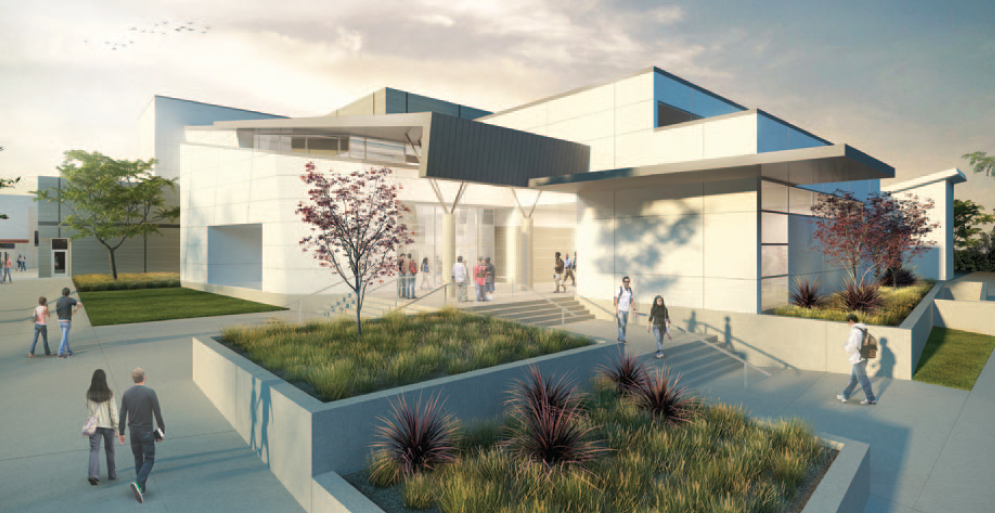By: Rick Erlerheim, Director, Career Technical Education, Fresno USD; Dr. Steve Price, Educational Resource Consultants; and Scott Griffith, Principal, HMC Architects, Central Valley
Formal education has a long history of creating separation, even isolation, for students with specialized interests. This tradition is pervasive in the ways that schools are organized and operated.
Correspondingly, specialized programs in vocational arts and fine arts are isolated on campuses because they are considered to be supplemental to the core academic subjects. This separation, particularly of vocational arts classes, is an acknowledgment of the traditional separation between the academic tracks and applied arts tracks in comprehensive high schools.
 Buchanan High School’s Performing Arts Center is one of several projects at Clovis USD that received Career Technical Education (CTE) Grants.
Buchanan High School’s Performing Arts Center is one of several projects at Clovis USD that received Career Technical Education (CTE) Grants.
This ideological separation is fundamental to vocational programs being located on separated areas of a campus or even in special schools dedicated to education in the trades. The problem is that such isolation violates the most current thinking about the integration of subject matter and the importance of context in learning. It follows that vocational education is most effective when it is integrated with other subject matter and that students learn best through applied learning opportunities. This trend toward integration is noted in the shift in terminology from vocational education to career technical education (CTE).
According to Tracewell Hanrahan, Executive Officer-School Leadership at Fresno Unified School District, “Career and technical education programs engage students, help them understand why they need to stay in school, help them develop critical workplace skills, and prepare them for work opportunities.”
The Fresno Unified School District is responding to this trend toward integrated career technical education through the following adaptations:
1. Integration of career technical education in the school curriculum:
This approach is the first step to incorporating career technical education as part of the entire K–12 curriculum. This commitment to CTE provides students who may matriculate to higher education the practical learning contexts to make academics authentic. It also provides the skills necessary for students to be effective in the modern workplace.
2. Reintegration of education and career through partnerships:
Partnerships between academic institutions and businesses serve as a model for the merger of academics and applications. Bringing industry advisors together with teachers ensures the integrity of the curriculum. Bringing students together with industry leaders provides effective mentoring. Providing learning opportunities in this manner trains an effective work force.
3. Developing career-oriented pathways through school:
The career focus of the curriculum draws from all of the content areas for skill development. Specializations such as medicine or engineering must draw from mathematics, science, social studies, and language arts to develop all of the skills necessary for workplace readiness.

4. Integration of technology into career education:
The change in terminology from vocational education to career technical education is an acknowledgment of the role that technology plays in industries and the skills required for workplace preparation. This difference is demonstrated in the distinction between conducting a traditional auto shop and teaching automotive technologies and design.
5. Modifications of teacher certification and training:
The concept of the highly qualified teacher must be adapted to allow for a different definition of expertise. Whereas the primary method of certification for teachers has been college preparation with specific specialization in the certified subject area, career technical education must allow for the expertise that exists in the industry. Those who bring real world experience must be brought into the teaching ranks in order for schools to provide real-world learning experiences for students. Teachers and students must also be exposed to authentic work environments in order to comprehend the applications for learning. Mechanisms such as internships, visiting scholars, and work projects can be invaluable for the integration of career technical education.
Clovis and Fresno Unified School Districts are proud to be at the forefront of building facilities with state CTE grant funds and preparing the curriculum and programs that will make these facilities come alive with real-world learning.
Writing a Successful Career Tech Grant
[nggallery id=91]
